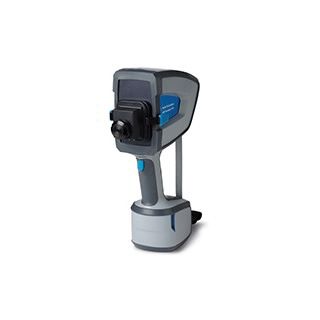On A Whole New Wavelength: What Is FTIR And How Does It Work?
Meet the new kid on the spectroscopy block – FTIR.
Whether you work with polymers, minerals, environmental science or even historical artefacts, FTIR can be applied to transform your analysis capabilities.
Read on to learn what FTIR is and how it works!
What is FTIR?
FTIR, or Fourier Transform Infrared is a form of spectroscopy that utilises infrared light to identify the chemical composition of a sample. Unlike other forms of infrared spectroscopy, FTIR analyses the entire spectrum of light at once, rather than individually.
How Does FTIR Work?
FTIR analyses the elemental composition of a material sample. It works by projecting a beam of infrared light through the sample and measuring the amount of light absorbed at different frequencies.
This absorption spectrum is unique for different molecules, with molecules belonging to different elements absorbing light at specific frequencies. The absorption spectrum is then transformed into a more detailed spectrum through the Fourier transform method. This allows for the identification of specific elements in the sample.
What Are the Benefits of FTIR?
FTIR offers several key benefits over other forms of infrared spectroscopy.
More Detailed Spectral Range
FTIR is highly accurate and provides an impressively detailed spectra that allow for the identification of even trace amounts of chemical compounds. This is because unlike regular Infrared technologies, the transform process makes the spectrum even more detailed than simply studying individual wavelengths.
Faster Analysis
Regular Infrared technology analyses portions of the spectrum individually. However, the Fourier transform process allows the entire spectrum to be analysed simultaneously, making analysis much faster.
Different Sample Forms
Fourier Transform Infrared has the ability to analyse samples across the three main states of matter: solids, liquids and gas. This gives it a significant advantage because you don’t need to conduct different methods of analysis for different sample states. If you are out in the field, you can test any sample you come across in the environment.
Non-Destructive
FTIR is non-destructive, meaning samples can be analysed without damaging them, making it ideal for use in industries where samples must be handled delicately, like historical artefact analysis. It’s also a safer technology for testing potentially harmful or toxic samples, as the operator doesn’t have to disturb or handle them.
Which Industries Can Apply FTIR?
FTIR is a useful technology for a wide variety of industries.
Polymers and Coatings
FTIR is used to identify the chemical composition of polymers, as well as to analyse the properties of these materials, such as their thermal stability. It can also help detect the presence of harmful contaminants in coatings, such as lead.
Environmental Science
Because of its ability to test samples in solid, liquid and gas form, FTIR is uniquely equipped to handle all types of environmental analysis. This can include testing soil, water or air contaminants.
Mineral Identification
The wide detection range of FTIR makes it a vital tool in the field of mineral analysis. Not only can it positively identify the presence of specific minerals, it can also measure their quality and purity with a high degree of accuracy.
Historical Artefacts
Historical artefacts, especially paintings, require extreme care when being tested. They are often priceless and taking or damaging samples is unacceptable. FTIR detects non-destructively, and can accurately assess the composition of artefacts. This is especially useful for detecting painted over sections of paintings, or level of degradation within metallic artefacts.
The Agilent 4300 Handheld FTIR Analyser

The Agilent 4300 Handheld FTIR Analyser is the first of its kind, and has quickly become the leading handheld FTIR device on the market. With its easy point-and-shoot functionality and lightweight (only 2 kgs) design, it really is the premier option for FTIR analysis in the field.
One of the most time-consuming aspects of mining exploration is lab turnaround times. Sending samples and waiting for their return halts progress. WIth the Agilent 4300’s instant results, you can get confirmation in the field.
Its interchangeable interface also allows for easy switching when analysing different materials, such as swapping from a polymer to a soil sample. When combined with its ability to analyse solids, liquids and gases, the diversity of sample types it can test are astounding.
Furthermore, for mining specifically, its superior mineral analysis range means it is much more competent at finding previously unseen minerals than any alternatives. The specificity of its analysis also reveals the presence of quartz and garnets, which can help you avoid inefficient energy use while grinding during processing.
Portable Analytical Solutions
Portable Analytical Solutions supplies all sorts of analysis devices for a range of industries across Australia and New Zealand.
While Fourier Transform Infrared is one such technology, there are many others that could also help you make sample analysis faster and more accurate.
To purchase your own Agilent 4300 Handheld FTIR Analyser, or one of our other FTIR products, don’t hesitate to get in contact today.
